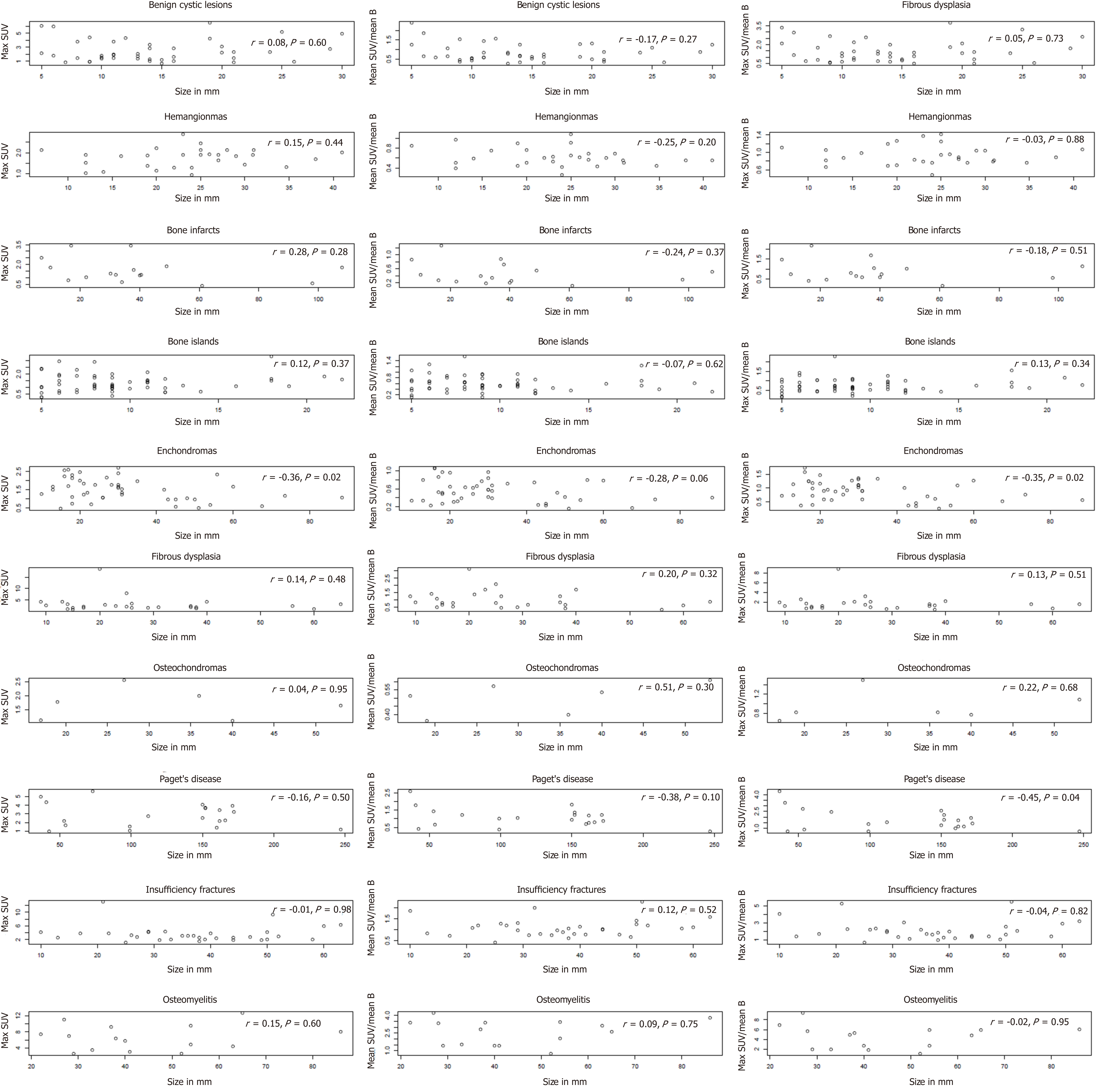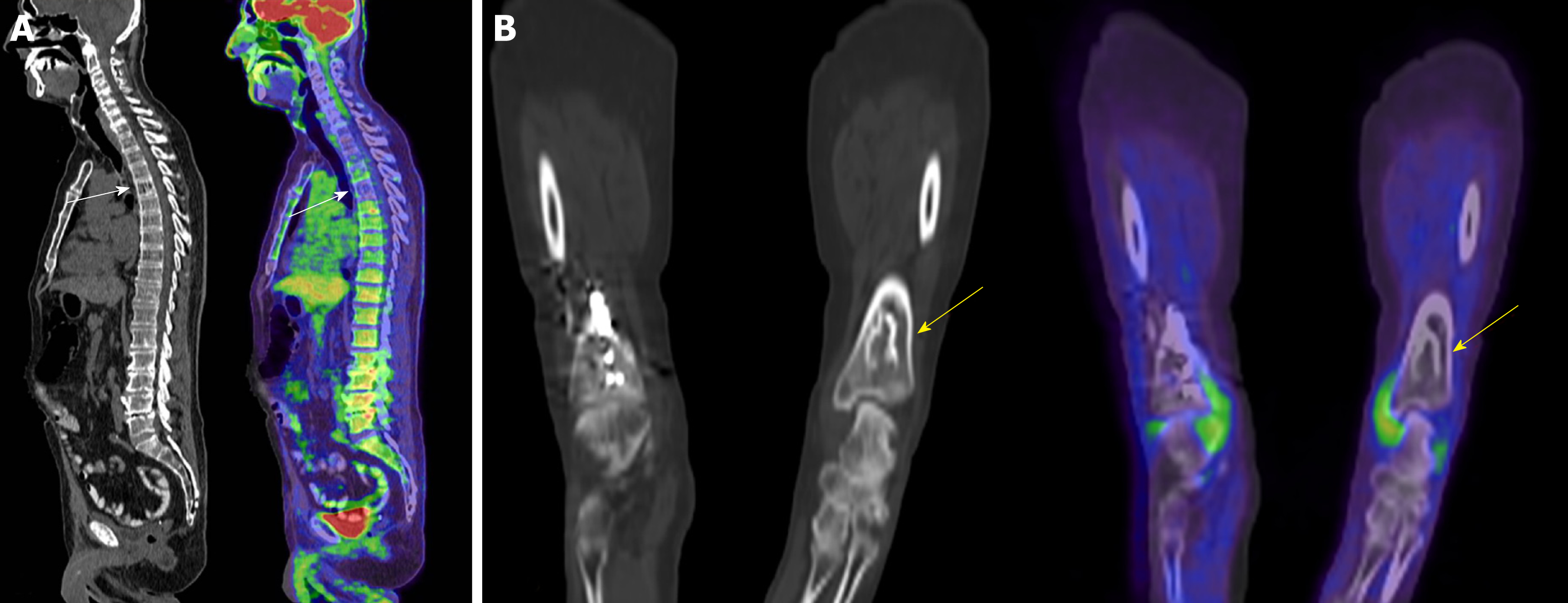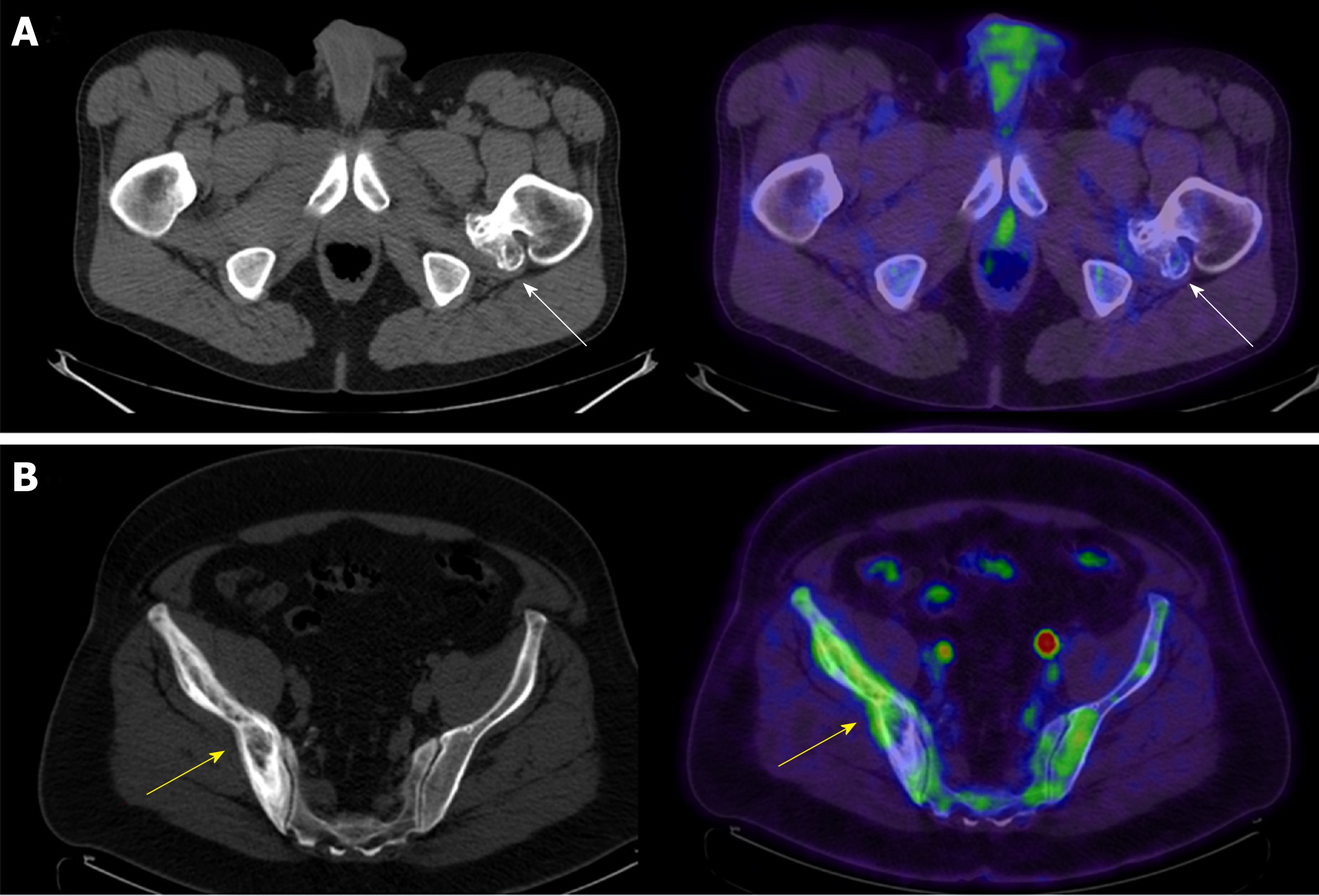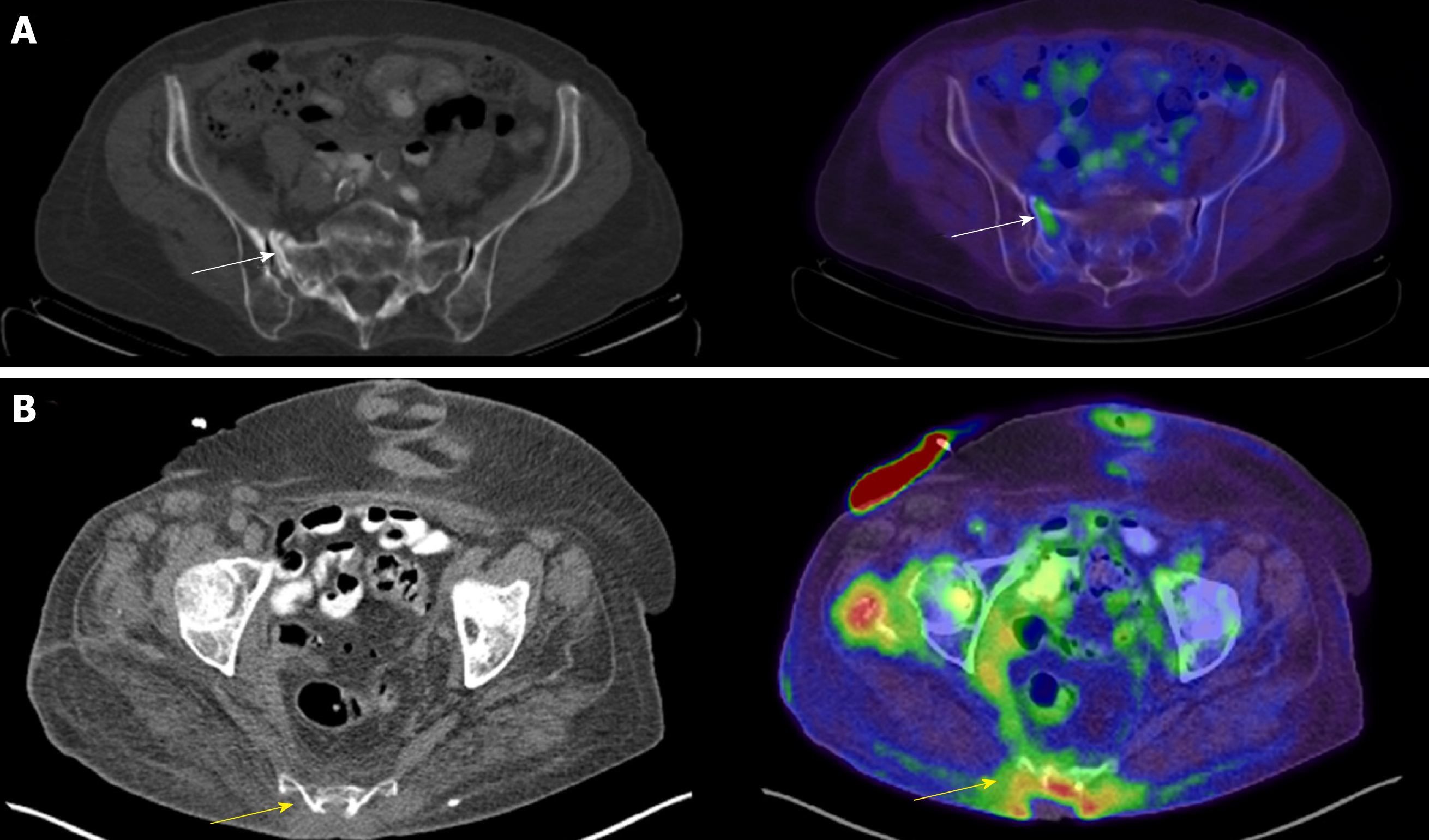Copyright
©The Author(s) 2019.
World J Radiol. Jun 28, 2019; 11(6): 81-93
Published online Jun 28, 2019. doi: 10.4329/wjr.v11.i6.81
Published online Jun 28, 2019. doi: 10.4329/wjr.v11.i6.81
Figure 1 Plots of maximum standardized uptake value values, mean standardized uptake value/mean blood pool, and maximum standardized uptake value/blood pool by lesion size for each lesion type.
SUV: Standardized uptake value; Max SUV: Maximum standardized uptake value; Mean SUV/Mean B: Mean standardized uptake value divided by the mean blood pool uptake; Max SUV/Mean B: Maximum standardized uptake value divided by the mean blood pool uptake.
Figure 2 Axial computed tomography and axial fused positron emission tomography/computed tomography of the pelvis in an 82-year-old male with history of colon and parotid gland cancer with subchondral cyst in the right femoral head (arrows) (maximum standardized uptake value 5.
2).
Figure 3 Computed tomography and fused positron emission tomography/computed tomography of two patients.
A: Sagittal computed tomography (CT) and sagittal fused positron emission tomography (PET)/CT of the spine in a 73-year-old male with history of lymphoma and a hemangioma in the T5 vertebral body (arrows) [maximum standardized uptake value (SUV) 2.86]; B: Coronal CT and coronal fused PET/CT of the distal tibia in a 54-year-old female with history of a neuroendocrine lung tumor demonstrating a bone infarct (arrows) in the distal tibia (maximum SUV 0.37).
Figure 4 Axial computed tomography and axial fused positron emission tomography/computed tomography of two patients.
A: Axial computed tomography (CT) and axial fused positron emission tomography (PET)/CT of the pelvis in a 76-year-old male with a history of a solitary pulmonary nodule and a bone island in his left ilium (arrows); B: Axial CT and axial fused PET/CT of the chest in a 52-year-old female with a history of melanoma and an enchondroma in the left proximal humerus (arrows) (maximum standardized uptake value 2.33).
Figure 5 Axial computed tomography and axial fused positron emission tomography/computed tomography of two patients.
A: Axial computed tomography (CT) and axial fused positron emission tomography (PET)/CT of the pelvis in a 51-year-old male with diffuse large B-cell lymphoma and a sessile osteochondroma arising from the proximal left femur (arrows) [maximum standardized uptake value (SUV) 1.64]; B: Axial CT and axial fused PET/CT of the pelvis in a 61-year-old male with a history of a follicular lymphoma and Paget’s disease of the bone involving the right ilium (arrows) (maximum SUV 3.92).
Figure 6 Axial computed tomography and axial fused positron emission tomography/computed tomography of two patients.
A: Axial computed tomography (CT) and axial fused positron emission tomography (PET)/CT of the pelvis in an 84-year-old female with a history of non-Hodgkin’s lymphoma and an insufficiency fracture of the right sacral ala (arrows) [maximum standardized uptake value (SUV) 1.99]; B: Axial CT and axial fused PET/CT of the pelvis in an 82-year-old female with a sacral decubitus ulcer and osteomyelitis (arrows).
- Citation: Elangovan SM, Sebro R. Positron emission tomography/computed tomography imaging appearance of benign and classic “do not touch” osseous lesions. World J Radiol 2019; 11(6): 81-93
- URL: https://www.wjgnet.com/1949-8470/full/v11/i6/81.htm
- DOI: https://dx.doi.org/10.4329/wjr.v11.i6.81


















